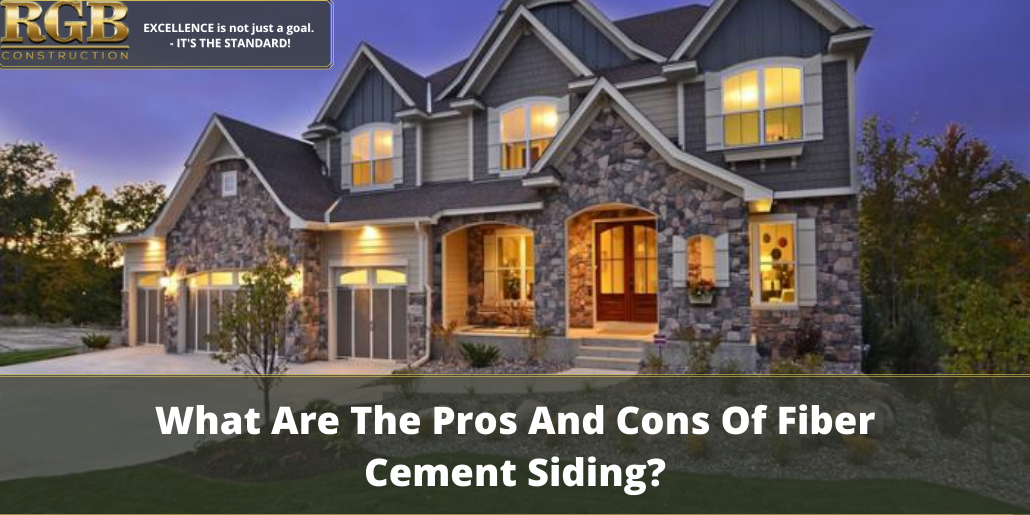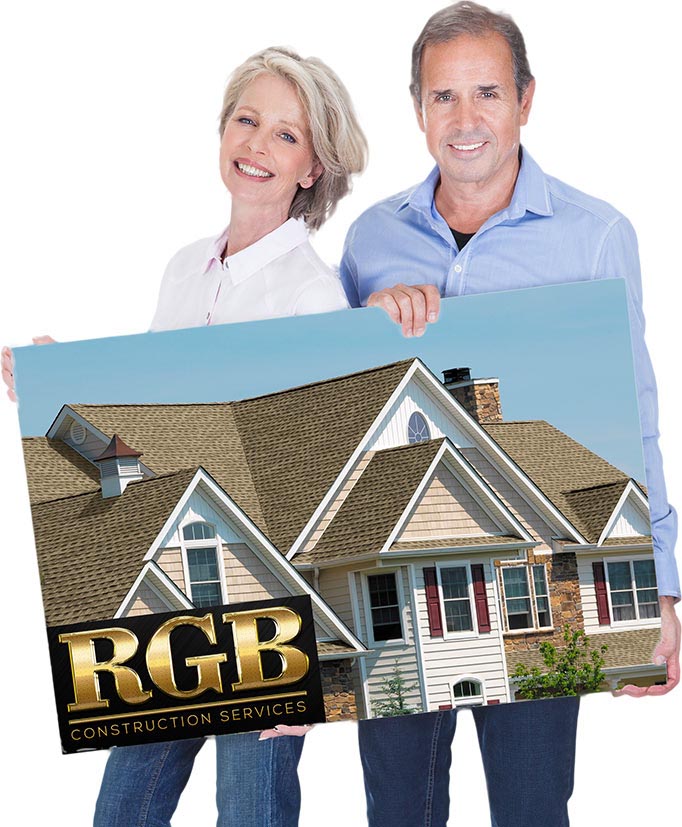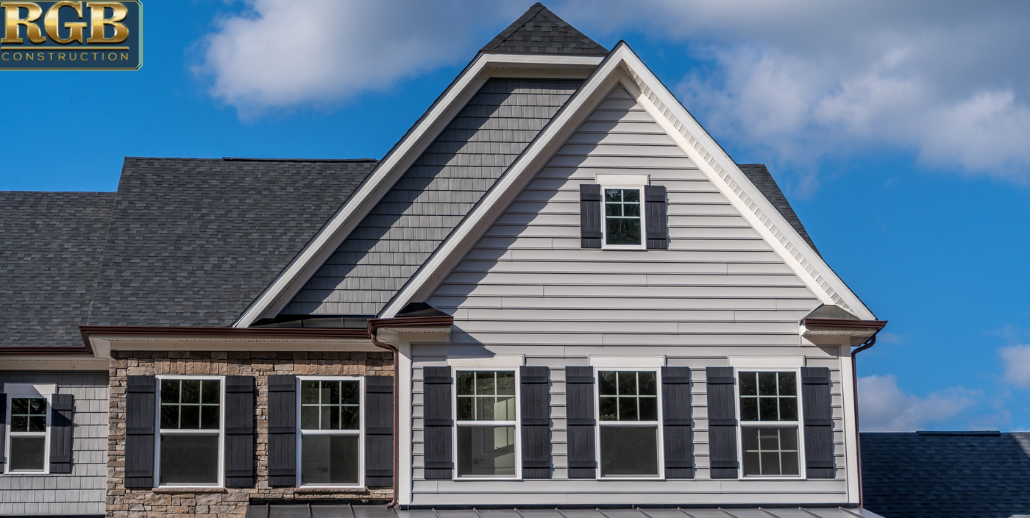Maybe you don’t like the idea of vinyl siding. Maybe you want something a bit more unique, something that mimics wood in appearance but comes at a cheaper cost. Although vinyl siding is still one of the more popular forms of residential siding, fiber cement is quickly gaining momentum throughout the country.
It’s a fabulous material—with a few negatives. So, if you are considering fiber cement as an option, you need to know the pros and cons.
What Is Fiber Cement Siding?
Before jumping into the pros and cons of fiber cement siding, we need to talk about what it is. Fiber cement siding is made of two obvious ingredients: wood (cellulose) fibers and. Sometimes, the mixture will also contain silica. During fabrication, the fiber cement is pressed into molds that can either form long siding planks or shingles. They can be made to look like wood, but there are several textures available.
How Is Fiber Cement Siding Made?
The process of manufacturing fiber cement siding involves mixing cement, sand, and cellulose fibers with water and other additives to create a slurry. This slurry is then pressed and cured to form durable and resilient fiber cement boards. Our team at RGB Construction is well-versed in the intricacies of fiber cement siding installation and can ensure a flawless application for your home.
The Pros of Fiber Cement Siding
1. Withstands All Kinds Of Environments, Like Salty Air
This is a big one for those who own coastal homes. Though the salt breeze can be refreshing for humans, it does horrible damage to houses over time. However, when you choose fiber cement siding, you will find that it can withstand such harsh conditions, including pounding rain, high winds, and hail. If you live in a high-risk area, then you should consider fiber cement siding for enhanced protection.
2. It Is Not Flammable
One of the things that scare homeowners the most is the chance of fire. Fiber cement is produced with materials that are at least 90 percent inflammable. Even when exposed to intense heat, fiber cement siding will stay strong. It was given a Class 1(A) rating, meaning that direct flames and heat will not affect it. Unlike other siding materials, fiber cement does not contribute to the spread of flames, giving you peace of mind.
3. You Can Customize It
Similar to the wood planks fiber cement is designed to mimic, you can install it vertically or horizontally, and it can even be used as shingles and trimming. Since fiber cement can be molded into numerous shapes and thicknesses, it can be used with many kinds of houses. You also have a nearly endless list of color options. Some fiber cement siding comes pre-painted, but you can also choose to paint it yourself (though this involves extra care steps).
4. High Durability And Resistance
Living in Gloucester County, NJ, and South Jersey means experiencing a range of weather conditions throughout the year. Fortunately, fiber cement siding is highly resistant to weather elements. It can withstand the region’s strong winds, heavy rainfall, and even the intense heat of summer. With fiber cement siding installed by RGB Construction, your home will be well-protected against the elements.
There are different grades of fiber cement, but all of them have around the same level of durability. This means that even entry-level fiber cement is going to last many years, never warp, rot, or melt like wood or vinyl. Prolonged exposure to UV rays won’t cause deterioration.
Furthermore, fiber cement siding provides total protection against insects and other pests. The siding is seamless and doesn’t have overlapped areas where mildew or mold can grow. Since its made of concrete, animals cannot chew through it.
5. Surprising Amount Of Longevity For The Cost
Yes, fiber cement can seem expensive when you are looking at the outright cost. Some places will charge about $0.70 per square foot, while more high-end brands might charge around $5.00 per square foot. Yet, when you consider the longevity of the material, the investment does not seem like that much. Non-backcoated fiber cement can last up to 50 years; backcoated fiber cement can go as long as 75 years. And if you maintain it well enough, it could last beyond the estimated lifespan.
6. Pest Resistance
As a local roofer in Gloucester County, NJ, and South Jersey, RGB Construction understands the importance of protecting your home from pests. Fiber cement siding is not susceptible to termite or wood-boring insect infestations, ensuring that your home remains pest-free and structurally sound.
7. Low Maintenance
Maintaining the exterior of your home can be time-consuming and costly. However, with fiber cement siding installed by RGB Construction, you can enjoy the benefits of low maintenance. Unlike wood siding that requires frequent painting or staining, fiber cement siding is resistant to fading and does not require regular repainting. Simply washing it with a hose periodically is enough to keep it looking its best.
8. Aesthetic Appeal
Enhancing the curb appeal of your home is essential, and fiber cement siding offers a wide range of design options to achieve your desired look. At RGB Construction, we offer various textures, colors, and styles of fiber cement siding to complement the architectural style of your home. Whether you prefer the classic look of wood or the sleek appearance of modern designs, our team can help you find the perfect fiber cement siding to transform your home’s exterior.
The Cons Of Fiber Cement Siding
1. Maintenance Can Be A Love/Hate Affair
Depending on the quality of your siding, as well as the kind you get (pre-painted vs. Pre-primed), you may find yourself doing a lot more than anticipated for your fiber cement siding. That said, it is rare that maintenance is going to be tedious. A factory paint job will last you about 25 years before you need to repaint it. Meanwhile, some vinyl siding never needs to be repainted.
You may also need to recaulk some areas of the fiber cement during maintenance. Otherwise, maintenance can be straightforward: clean your gutters, wash the siding with a garden hose, and use mild dish detergent and a nylon brush to scrub away grime.
2. Installation Is More Difficult
Let “cement” clue you in to how annoying installation can be. Unlike vinyl siding, which is rather lightweight, 100 square feet of fiber cement weighs around 300 pounds. Lifting that requires a lot of manpower. Naturally, that is going to extend the time of installation, so the costs are going to be higher than other forms of siding. Improper installation can lead to performance issues such as water infiltration or premature deterioration.
3. Insulation May Be Lacking In Some Climates
Presently, vinyl and wood siding present the best insulation ratings. Fiber cement is not as bad as some materials, because it has wood in it, but it is not as energy efficient. For colder climates, fiber cement siding may not protect your home as well as something thicker, such as vinyl paired with insulating foam.
4. Cost
Compared to some other siding options, fiber cement siding can have a higher upfront cost. However, considering its durability, longevity, and low maintenance requirements, fiber cement siding is a worthwhile investment that can save you money in the long run. RGB Construction offers competitive pricing and flexible financing options to make fiber cement siding more accessible for homeowners in Gloucester County, NJ, and South Jersey.
4. Moisture and Mold Concerns
While fiber cement siding is resistant to moisture, it’s essential to ensure proper installation and regular maintenance to prevent any potential moisture-related issues. Without proper attention, moisture infiltration can lead to mold and mildew growth, affecting both the appearance and structural integrity of the siding. RGB Construction can help you maintain your
5. Moisture and Mold Concerns
While fiber cement siding is resistant to moisture, it’s essential to ensure proper installation and regular maintenance to prevent any potential moisture-related issues. Without proper attention, moisture infiltration can lead to mold and mildew growth, affecting both the appearance and structural integrity of the siding. RGB Construction can help you maintain your fiber cement siding to prevent any moisture-related problems.
6. Environmental Impact
As an environmentally-conscious company, RGB Construction acknowledges the environmental impact of construction materials. The production process of fiber cement siding involves the use of energy-intensive materials like cement. Additionally, the disposal of fiber cement waste requires careful consideration. However, some manufacturers are actively taking steps to improve the sustainability of fiber cement siding through recycling initiatives and the use of eco-friendly additives.
7. Limited Color Options
Compared to other siding materials like vinyl, fiber cement siding offers a more limited range of color options. While it can be painted, the need for periodic repainting may be a consideration for homeowners looking for long-term color durability. RGB Construction can help you explore color options and find a solution that meets your aesthetic preferences.
Frequently Asked Questions (FAQs)
Is fiber cement siding suitable for all climates?
Yes, fiber cement siding is suitable for various climates. It is highly resistant to extreme temperatures, moisture, and UV rays, making it a durable choice in both hot and cold climates.
How long does fiber cement siding last?
When properly installed and maintained, fiber cement siding can last for 30 to 50 years or even longer.
Can fiber cement siding be painted?
Yes, fiber cement siding can be painted to change its color or refresh its appearance. It’s important to use high-quality exterior paint and follow proper painting techniques for optimal results.
Is fiber cement siding resistant to termites?
Yes, fiber cement siding is not susceptible to termite or wood-boring insect infestations, providing an added layer of protection for your home.
Does fiber cement siding require regular maintenance?
Fiber cement siding is known for its low maintenance requirements. While it does not require frequent painting or staining, it’s recommended to clean it periodically with a hose to remove dirt and debris.
Is fiber cement siding a good investment?
Yes, fiber cement siding is a good investment due to its durability, longevity, and low maintenance requirements. It adds value to your home and can potentially increase its resale value.
What are the alternatives to fiber cement siding?
Some alternatives to fiber cement siding include vinyl siding, wood siding, and engineered wood siding. Each option has its own advantages and considerations, and RGB Construction can help you explore the best choice for your home.
Can fiber cement siding increase home value?
Yes, fiber cement siding can increase the value of your home. Its durability, low maintenance requirements, and aesthetic appeal make it an attractive feature for potential buyers.
How does fiber cement siding compare to vinyl siding?
Fiber cement siding offers superior durability and resistance to weather elements compared to vinyl siding. It has a more natural appearance and can mimic the look of wood, while vinyl siding offers a wider range of color options.
Is fiber cement siding eco-friendly?
While the production process of fiber cement siding has some environmental impact, efforts are being made to improve its sustainability through recycling initiatives and eco-friendly additives. It is a more eco-friendly option compared to some other siding materials.
Conclusion
When trying to decide on the correct kind of siding for your home, you should look at things like durability, cost, and ease of installation. For many, it might come down to fiber cement siding and another option, like vinyl. If the low maintenance and resilience of fiber cement siding appeals to you, it may be time to invest in it. Although the cost of installation is a bit higher, you can’t go wrong with the aesthetic appeal.
When you search for fiber cement siding contractors near me, don’t be surprised when RGB Construction makes the list! We are well known in your area for our top notch customer service and professionalism. If
you have questions about fiber cement siding or would like to schedule a consultation, give us a call at 856-264-9093.









